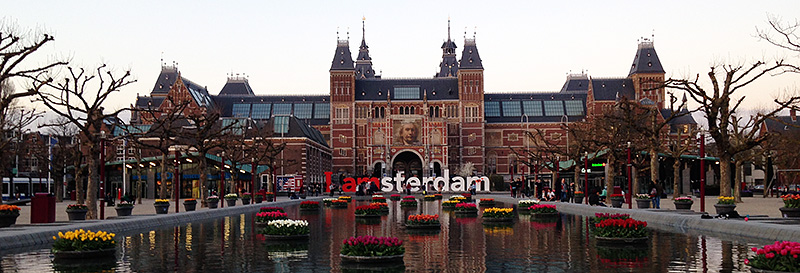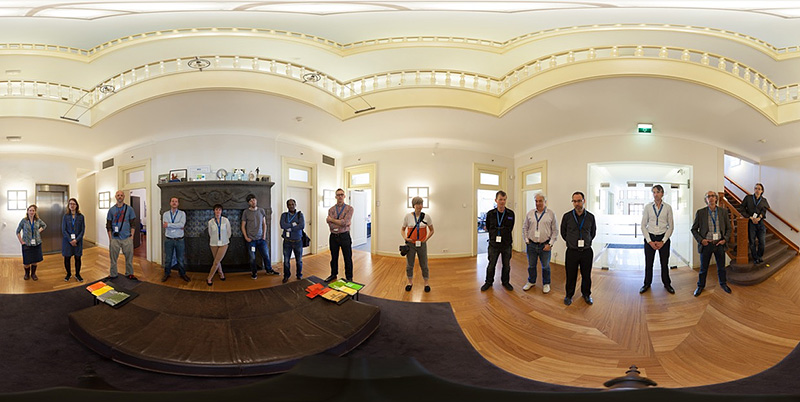 It is hard to believe that more than a month has passed since the fantastic “2 and 3D: Practice and Prophecies” Conference at the Rijksmuseum in April. So much was packed into those 2 short days: standardisation in colour and targets (who knew standards were so non-standard?), mass-digitisation and bespoke object specific photography techniques, panoramas, multispectral and 3D imaging, digital asset management and the role of photography in heritage institutions. This was a heritage photography event not to be missed, which is why I was delighted when the Association for Historical and Fine Art Photographers (AHFAP) offered me their competition bursary to attend. I gathered so much information in Amsterdam that I am still sifting through the notes and links and chasing up my post –conference ‘to do’ list! However, I would like to share a few of my highlights from the conference.
It is hard to believe that more than a month has passed since the fantastic “2 and 3D: Practice and Prophecies” Conference at the Rijksmuseum in April. So much was packed into those 2 short days: standardisation in colour and targets (who knew standards were so non-standard?), mass-digitisation and bespoke object specific photography techniques, panoramas, multispectral and 3D imaging, digital asset management and the role of photography in heritage institutions. This was a heritage photography event not to be missed, which is why I was delighted when the Association for Historical and Fine Art Photographers (AHFAP) offered me their competition bursary to attend. I gathered so much information in Amsterdam that I am still sifting through the notes and links and chasing up my post –conference ‘to do’ list! However, I would like to share a few of my highlights from the conference.
Bianca du Mortier delivered a fascinating talk on the development of costume photography, from the days when it was an after-thought: photos taken with the originals in glass cases already on display in the museum battling against poor lighting and reflections, to photography as an integral part of the collection management: working creatively with curators and graphic designers to create ‘pimped-up’ conservation boxes or even include the odd naked model.

I have often felt that mass-digitisation didn’t sit entirely comfortably with rare and fragile museum collections, however the Smithsonian’s Günter Waibel made a compelling case for it. Faced with a 138 million strong collection, they developed superb pre-digitisation organisation, followed by slick workflows tried and tested with rapid capture prototypes to show that mass-digitisation is achievable. What is more, he introduced us to digitisation’s new super-hero, Captain Capture! http://dpo.si.edu/sites/dpo.ocio.si.edu/files/DPO_CaptainCapture_Comic-FINAL_pagebypage.pdf
New technologies permeated the whole conference. Robert Erdmann’s clever curtain viewer displays visible light, infrared and infrared reflectography simultaneously, allowing the under-painting to be revealed without the jarring sensation of switching between images. Click on the Triptych of St. Uncumber here http://boschproject.org/bosch_in_venice.html to discover the hidden figures in the left and right hand panels.

3D has really captured the imagination – its uses and potential seem to be expanding exponentially, from capturing a record of an at risk archaeological site in time of war, to conservation and reconstruction of damaged artefacts, new ways for academics to collaborate and exciting possibilities for audience engagement. I found the work of the Smithsonian and Factum Arte particularly inspiring. The Smithsonian’s Vincent Rossi told us how 3D prints taken from fossil digs could be made available within 4 days, when it would be years before the originals were cleaned and made available for use. They have also used this new technology to refresh old traditions, faster and less intrusively- from President Lincoln’s plaster life mask to President Obama’s 3D print out. See http://3d.si.edu for more information. In another project, Factum Arte scanned Tutankhamun’s tomb – accurate to 1mm- making a facsimile for the public to visit, allowing preservation of the original http://www.factum-arte.com.
There was also a wonderful range of practical workshops. I especially enjoyed Hugh Gilbert’s panorama session, in which he stepped us through making a panorama of the group, discussing the range of equipment and software available and imparting lots of tips along the way.

In this, the 30th Anniversary year of AHFAP, I feel privileged to have been selected for this bursary. In Tony Harris’s lecture on the AHFAP story I learned their constitution was set up ‘To encourage the interchange of ideas and general support amongst photographers practicing in these fields and to promote access to departments thereby increasing wider opportunities for experience.’ This bursary is just one example of how they are achieving this. The “2 and 3D conference” was an informative and inspiring event. There were also many opportunities to renew acquaintance and forge new links during the very enjoyable social events – canal cruising on a sunny evening is hard to beat! I would like to thank AHFAP and Colour Confidence for their support and the Rijksmuseum team for such a great conference.
Susan Pettigrew, Photographer
Be First to Comment